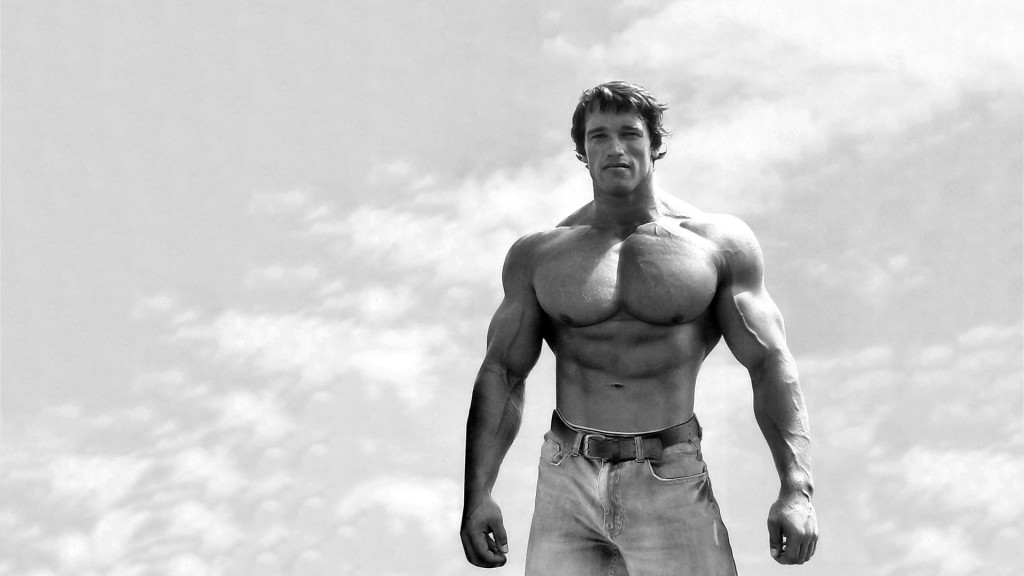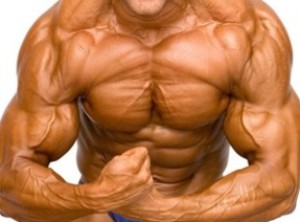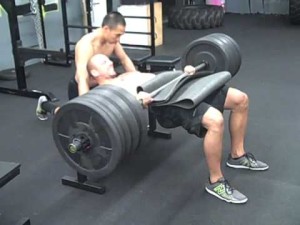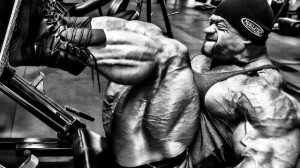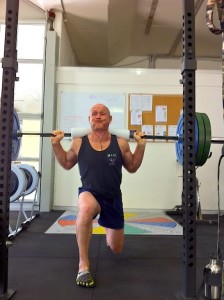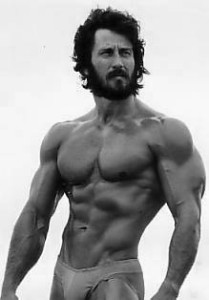Hey guys, among the rest of our updates about bodybuilding, powerlifting gear, apparel footwear and what not, we're going to start a bi-weekly blog and post up great information pertaining to the sport. Scientific, backed by evidence, useful. No bro-science or hearsay! This weeks article is by Bret Contreas, the glute guy, see below for more!
We all want bigger muscles, and in order to build bigger muscles, we need to get stronger – much stronger. Gaining strength through progressive overload ensures that we continue to place more tension on the muscles over time, forcing them to adapt by growing larger. Heavier weights equals greater tension which equals bigger muscles. Got it? Great!
However, heavier weights alone will not build the biggest muscles. Powerlifters lift heavier weight than bodybuilders, thereby placing greater tension on their musculature compared to bodybuilders. Yet despite this greater tension, bodybuilders are still bigger. If tension were the be-all-end-all, powerlifters would out-muscle bodybuilders. We can’t say it’s just the drugs. Think about it – both types of lifters take anabolic steroids, natural bodybuilders are still bigger than natural powerlifters, and when powerlifters want to build more muscle, they borrow methodology from bodybuilders by employing higher-rep assistance lifts with shorter rest times in between sets.
A couple of years ago, my colleague Brad Schoenfeld and I wrote a comprehensive article describing the mechanisms through which bodybuilders are more muscular than powerlifters. The article was titled, Why Bodybuilders are More Jacked than Powerlifters, and if you haven’t read it yet, I recommend you check it out. In this article, I’d like to expound upon the previous article.
In Brad’s legendary review article, The Mechanisms of Muscular Hypertrophy, he informs us that there are three primary mechanisms to growing muscles:
- Mechanical tension
- Metabolic stress
- Muscle damage
To many lifters, these mechanisms make good sense as it jives with personal experience. However, to many other lifters, the list is a bit abstract and nebulous. Allow me to explain these mechanisms in plain and simple language.
Mechanical Tension
Sometimes you might feel like a muscle is about to rip off of a bone when you’re lifting heavy weights. This, my friend, is mechanical tension. If you place tension on a muscle by stretching it passively (without letting it contract), the source of tension is called passive elastic tension. If you place tension on a muscle by flexing it as hard as possible via an isometric contraction, the source of tension is known as active tension. When you lift weights through a full range of motion, the muscles are placed under a combination of passive and active tension since they are stretched while being activated. Research shows that dynamic movements are superior to both stretching and isometrics for hypertrophic gains, so tension alone won’t deliver maximum muscle growth. Tension through a full range of motion is what builds maximum muscle.
Furthermore, time under tension (TUT) is another important factor to consider. Performing one maximal contraction once every two weeks will not yield maximal hypertrophic gains – it’s just not enough of a stimulus to optimize anabolic processes. The muscles need ample signaling to grow larger.
Metabolic Stress
Think about the feeling you get when you know you’re really targeting a muscle – the burning sensation you elicit and the pump that you achieve. These are two mechanisms that fall under the umbrella of metabolic stress. Metabolic stress is brought about by several factors, including:
- The occlusion of veins by persistent muscle contractions, which prevents blood from escaping,
- The hypoxia or lack of oxygen supply in the muscles due to the trapping of blood,
- The build-up of metabolic byproducts such as lactate and the increased hormonal surge, and
- The cell swelling or “pump” of the muscles, also due to the pooling of blood.
These factors aid in building muscle and are synergistic with tension and progressive overload. These factors also help explain why Kaatsu (occlusion) training is highly effective at inducing hypertrophy despite the lower levels of muscle tension compared to traditional resistance training.
Muscular Damage
Approximately two days following a strenuous bout of exercise, your soreness will likely reach it’s peak, and this soreness is somewhat indicative of muscular damage. Damage is created by either doing something that is unfamiliar, by accentuating the eccentric component to an exercise, or by stretching a muscle while it’s being activated, thereby inducing high amounts of strain. Therefore, variety is an important component to muscle damage as it ensures the targeting of different subdivisions and motor units of muscles.
The Interrelationship of Tension, Metabolic Stress, and Damage
This part will be a bit sciencey, but stick with me. Mechanical tension, metabolic stress, and muscle damage are interrelated, and they signal hypertrophic responses through multiple, redundant pathways. For example, a high magnitude of active tension at longer muscle lengths creates the greatest muscle damage. In other words, tension is very effective at damaging fibers as long as the muscle is stretched while being activated. Here’s another example. High tension through a full ROM is very effective at producing metabolic stress due to the prolonged muscle contractions which occludes the veins, which leaves no time for blood to escape the muscles. In other words, constant tension and greater TUT are very effective at inducing metabolic stress, assuming muscle activation is high enough to occlude the veins. I’ll continue with the examples. A pump actually places the myocytes under tension due to a swelling effect exerted on the muscle cell membranes, which is theorized to lead to greater muscle growth due to the perceived threat on the cells’ ultrastructures. In other words, metabolic stress is effective at creating tension from the inside out in the individual muscle cells. As a matter of fact, fiber damage can induce cell swelling just as the pump can, and this swelling can last for several days. Therefore, muscle damage is also effective at creating tension on the individual muscle cells. All three mechanisms can increase satellite cell (muscle stem cells) activation as well as activation of the important mTOR pathway. As you can see, the three mechanisms are highly interrelated.
Practical Applications
Many coaches argue that progressive overload via low rep training on the basic barbell lifts is sufficient for building maximal hypertrophy. The reason why this advice is so effective is because many individuals don’t quite grasp the importance of gaining strength as it relates to muscle growth. However, it alone is not sufficient for maximal gains. As Brad and I detailed in our previous article, there are many neural (non-hypertrophic) mechanisms through which a muscle can grow stronger without getting larger. This is a key facet of powerlifting, whereby lifters learn how to maximize strength via gains in nervous system efficiency and coordination. If your goal is to build maximum muscle, you don’t just want to rely solely on neural improvements for strength gains; you want your hypertrophic gains to mimic your strength gains. Therefore, be sure to rotate lifts, incorporate variety, and get strong in low, medium, and higher rep ranges.
Pick the Right Tool for the Trade
Some exercises are better than others at eliciting a pump, some exercises are better than others at creating tension in a muscle or a particular subdivision of a muscle, and some exercises are better than others at damaging fibers.
In general, performing squats, deadlifts, hip thrusts, bench presses, military presses, chins, and rows will ensure that you’re maximizing mechanical tension across the various muscle groups. However, one exercise alone will not maximize tension on the entire spectrum of fibers within a muscle. Exercises such as incline presses, dips, curls, shrugs, delt raises, leg presses, and glute ham raises can and should be employed for maximum muscle growth since they target unique fibers compared to the big basic movements. Furthermore, variations of the big lifts such as front squats, sumo deadlifts, close grip bench press, and pull-ups can and should be performed as well.
Movements that either place constant tension on a muscle or place the greatest tension on a muscle at shorter muscle lengths (in a contracted position) are best suited for creating a pump. For this reason, exercises like the pec deck, pullover machine, leg extension, leg curl, back extension, barbell glute bridge, lateral raise, concentration curl, and rope tricep extension are valuable. When done for medium to high reps with short rest periods and multiple sets, they can produce a skin-splitting pump. Bands and chains can be used as well to keep more constant loading on the muscle throughout the repetition, depending on the exercise’s strength curve.
Movements that place the greatest tension at long muscle lengths (in a stretched position) are best suited for creating muscle damage. For this reason, exercises like chest flies, pullovers, lunges, RDLs, good mornings, incline db curls, and overhead cable tricep extensions are valuable. Dumbbells can be used for pressing or rowing movements to place a greater stretch on the muscles, and full squats or deficit deadlifts can be performed to increase the joint ROM. Finally, eccentrics or eccentric-accentuated movements can be performed to target muscle damage. However, there’s a fine line between optimal damage and excessive damage. Damage is overrated and can easily do more harm than good if it interferes with strength gains and training frequency. Feeling a bit of soreness the following day or two is fine, but barely being able to sit down, or feeling like a muscle is going to pull from a simple activity, is overkill. Stimulate, don’t annihilate.
Wrapping Things Up
Ronnie Coleman said it best: Everybody wanna be a bodybuilder, but nobody wanna lift no heavy ass weight. Getting a pump and feeling the burn are easy, but getting stronger year in and year out is hard work. Very hard! Setting PR’s requires focus, determination, and consistency.
For this reason, reserve most of your mental energy for getting stronger. After you’ve warmed up and have begun your training session, start off with your heavy compound movements and try to set PR’s. Rest fully in between sets and psyche yourself up appropriately.
After the heavy work is done, now it’s time to have some fun. Choose some targeted movements and seek the pump and burn. Don’t work yourself up too much mentally, just bust out some medium to high rep sets with short rest periods. Don’t be overly concerned with setting PR’s during pump work. Focus on feeling the targeted muscle taking on the brunt of the work and fully fatiguing the fibers.
The majority of your mental energy should be focused on gaining strength via the big basics such as squats, deadlifts, hip thrusts, bench press, and chins. However, some of your mental energy should be focused on muscle activation and inducing metabolic stress. Becoming freakishly strong at the big basics through a variety of rep ranges might be the source of 80% of your hypertrophy gains over time. But if strength alone is your sole endeavor, you’ll likely leave 20% of room on the table for maximum muscularity. The increased satellite cell fusion, hypoxia, occlusion, and cell swelling that accompanies pump and burn type training provides the icing on the cake, and this adds up over time. Sticking to solely heavy work or solely high-rep work won’t build the optimal physique – you need the best of both styles of training if you want to reach your maximum muscular potential.
Muscles don’t just respond to tension. They respond to tension, metabolic stress, and damage. A sweet-spot of these factors likely exists that maximizes hypertrophy, and the ideal combination might differ between individuals. Until future research sheds light on the precise formula, bust out your heavy compound work first during your workouts and then choose some lighter, targeted movements and focus on inducing metabolic stress. If you’ve been ignoring these factors, I bet that you’ll notice favorable hypertrophic adaptations within a few months of adding in pump and burn methodology. Bodybuilders do this for a reason, and so should you! Don’t chase excessive soreness – it’s counterproductive to strength gains and will occur naturally with good training anyway.
Article by 'Bret Contreas - The Glute Guy'




